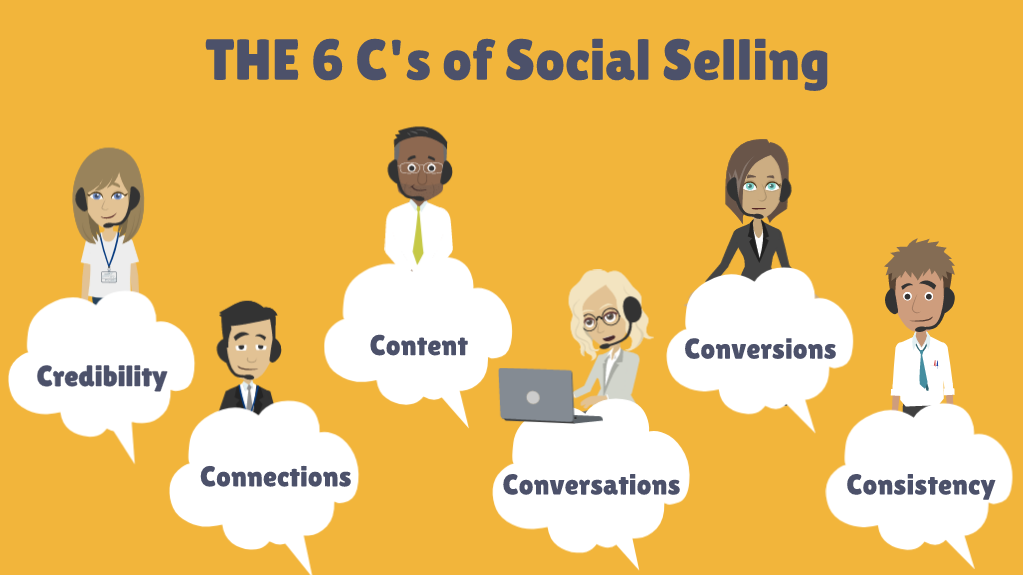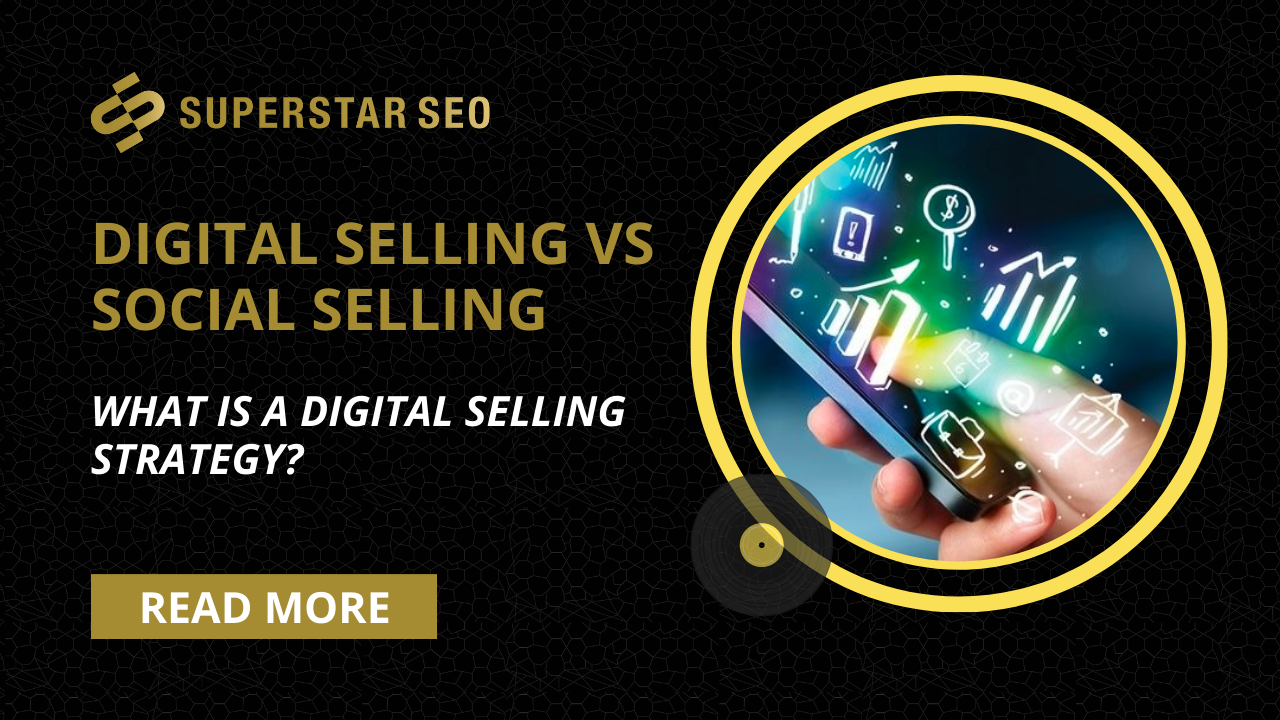Digital Selling Vs. Social Selling – Which Is Which [2024]
In the fast-paced world of sales, keeping up with the latest strategies is essential for success. Digital selling or social selling? Hmm…
While social selling has certainly made waves in recent years, it’s important not to overlook the bigger picture.
Enter digital selling – a holistic approach that encompasses all aspects of the sales process, from research to engagement to closing the deal.
As the progenitor of social selling, digital selling is the natural evolution of this strategy, offering even greater potential for sales teams and organizations to thrive.
What Is A Digital Selling Strategy?
Picture this… you’re a salesperson in the 21st century, armed with a smartphone, a laptop, and a world of digital tools at your fingertips.
So, what exactly does a digital selling strategy entail?
It’s all about leveraging the latest technologies and platforms to reach, engage and convert potential customers.
According to LinkedIn, 73% of sellers use technology to close more deals.
This could include anything from using social media to build relationships with prospects, creating personalized email campaigns, and embracing the power of video to deliver your message in a memorable and impactful way.
With the right marketing strategy in place, you’ll be able to leap tall sales targets in a single bound, connect with prospects faster than a speeding bullet, and close deals more powerfully than a locomotive!

Key Components of Digital Selling
Digital Research: Using digital marketing tools to gather insights on market trends, customer behavior, and competitive analysis. This data-driven approach helps in understanding potential customers’ needs and preferences.
Sales Enablement: Utilizing digital research in conjunction with customer relationship management (CRM) systems to gather vital information and target key decision-makers effectively.
CRM Management: Analyzing customer interactions and data throughout the buying journey to improve relationships and drive sales.
Content Creation: Developing valuable content that resonates with the target audience, enhancing brand visibility and engagement.
Digital Sales Messaging: Crafting messages tailored to the specific desires and pain points of potential customers.
Customer Engagement: Leveraging data analytics to track key performance indicators (KPIs) and foster meaningful customer interactions.
Account Management: Managing post-sale relationships through digital channels to maximize cross-selling and up-selling opportunities.
Sales Leadership: Leading digital sales efforts to guide the organization toward achieving its sales goals.
Strategy Integration: Aligning digital marketing strategies with overall business objectives to support sales initiatives.
Advantages of Digital Selling
Enhanced Customer Insights: Digital tools provide deep insights into customer behavior, enabling personalized approaches.
Improved Efficiency: Automation and data analytics streamline sales processes, reducing manual efforts.
Broader Reach: Digital channels allow for global reach, breaking geographical barriers.
Real-Time Engagement: Digital platforms enable instant interactions with prospects, facilitating quicker decision-making.
What’s A Social Selling Strategy?
 Digital selling strategy | Source
Digital selling strategy | SourceIt’s all about using social media platforms like LinkedIn, Twitter, and Facebook to engage with prospects, share content, and build relationships.
According to a study, salespeople who use social selling close 40%-50% more new business than those who don’t.
You can think of it like a digital cocktail party – except instead of small talk and hors d’oeuvres, you’re serving up valuable insights, industry news, and personalized messages that resonate with your target audience.
So, what does a strategy look like in action?
Imagine reaching out to a prospect on LinkedIn, commenting on one of their posts, and sharing an article that you think they might find interesting.
Or perhaps you connect with a prospect on Twitter, start a conversation around a topic they’re interested in, and share a link to your blog post that dives deeper into that topic.
Core Of Social Selling Tactics
Trigger Selling: Identifying and responding to triggers that indicate a prospect is ready to make a purchase. This involves monitoring social media activity for signs of interest or need.
Referral Selling: Acquiring new customers through referrals from satisfied clients. This strategy relies on strong relationships and leveraging customer satisfaction to generate leads.
Insights Selling: Establishing oneself as an industry thought leader by sharing insights and valuable content. This builds trust and attracts potential buyers.
Benefits of Social Selling
Personalized Engagement: Social selling allows for more personalized interactions, fostering trust and building stronger relationships with prospects.
Increased Opportunities: Social selling leaders generate more opportunities compared to those with lower social engagement.
Improved Conversion Rates: Engaging with prospects on social media can lead to higher conversion rates, as relationships are nurtured through consistent and meaningful interactions.
Social Selling Vs Digital Selling
| Digital Selling | Social Selling | |
|---|---|---|
| Definition | Using digital tools to sell products | Using social media to build relationships and sell products |
| Focus | More on sales and closing deals | More on building relationships and trust |
| Platforms | Websites, email, chatbots, etc. | Social media platforms like LinkedIn, Twitter, Facebook, etc. |
| Automation | More automation possible | More personalized and human interaction |
| Metrics | Focus on conversions and revenue | Focus on engagement and relationship-building |
| Sales Cycle | Generally shorter sales cycle | Longer sales cycle due to focus on relationship-building |
| Target Audience | Broad range of customers | Specific target audience based on social media analysis |
| Content | Can be more promotional | Focus on adding value and being informative |
| Importance in 2023 | Important for all industries | Increasingly important for B2B industries |
| Key Benefits | Efficiency and scalability | Building trust and credibility |
Digital selling is like using a bazooka to hit a bullseye – it’s all about closing deals quickly and efficiently using a variety of digital tools.
On the other hand, social selling techniques is more like a magnet that attracts potential customers by building relationships and trust on social media platforms.
While they have different focuses, platforms, and target audiences, they both require a personalized approach and a deep understanding of the target audience. It’s like making a custom suit for each potential customer – it takes time and effort, but it’s worth it for the perfect fit.
Integrating Digital and Social Selling
Digital selling and social selling, while distinct, are most effective when combined. This integration creates a powerful strategy that maximizes engagement and drives revenue growth.
Step-by-Step Integration
Step 1: Digital Research and Social Listening
Start with extensive digital research to understand market trends and customer preferences. Complement this with social listening to monitor conversations and identify potential customers. Tools like Google Analytics and social media monitoring platforms are essential.
Step 2: Targeting and Engagement
Use insights from research to identify key decision-makers. Engage with them on social platforms like LinkedIn and Twitter by sharing relevant content and participating in discussions. This ensures data-driven and personalized engagement.
Step 3: Content Strategy
Develop a content marketing strategy that caters to both digital and social channels. Create high-quality content addressing your audience’s pain points, showcasing your expertise, and guiding prospects through the buying journey. Include blog posts, whitepapers, infographics, videos, and social media posts.
Step 4: CRM Integration and Sales Enablement
Track all interactions within your CRM system to manage customer relationships effectively. Sales enablement tools for sales professionals provide resources and information needed to close deals efficiently.
Step 5: Performance Metrics and Continuous Improvement
Identify KPIs to measure the success of digital and social selling efforts. Analyze these metrics regularly to refine strategies and enhance performance.
Is There A Clear Winner Between The Two In 2024?
It’s…. hard to say.
They both have their own unique advantages, and the choice ultimately depends on… you (or your sales team in this case).
The choice between the two will ultimately depend on the specific needs and goals of a business or sales team.
For example…
Do you want to close deals quickly and efficiently? Digital selling.
Build long-term relationships with potential customers? Social selling is better.
The decision may also depend on the target audience, as some demographics may be more responsive to one approach over the other.
But one thing’s for sure: if you combine the power of both digital selling and social selling, you’ll have a sales strategy that’s super mega-powerful.





